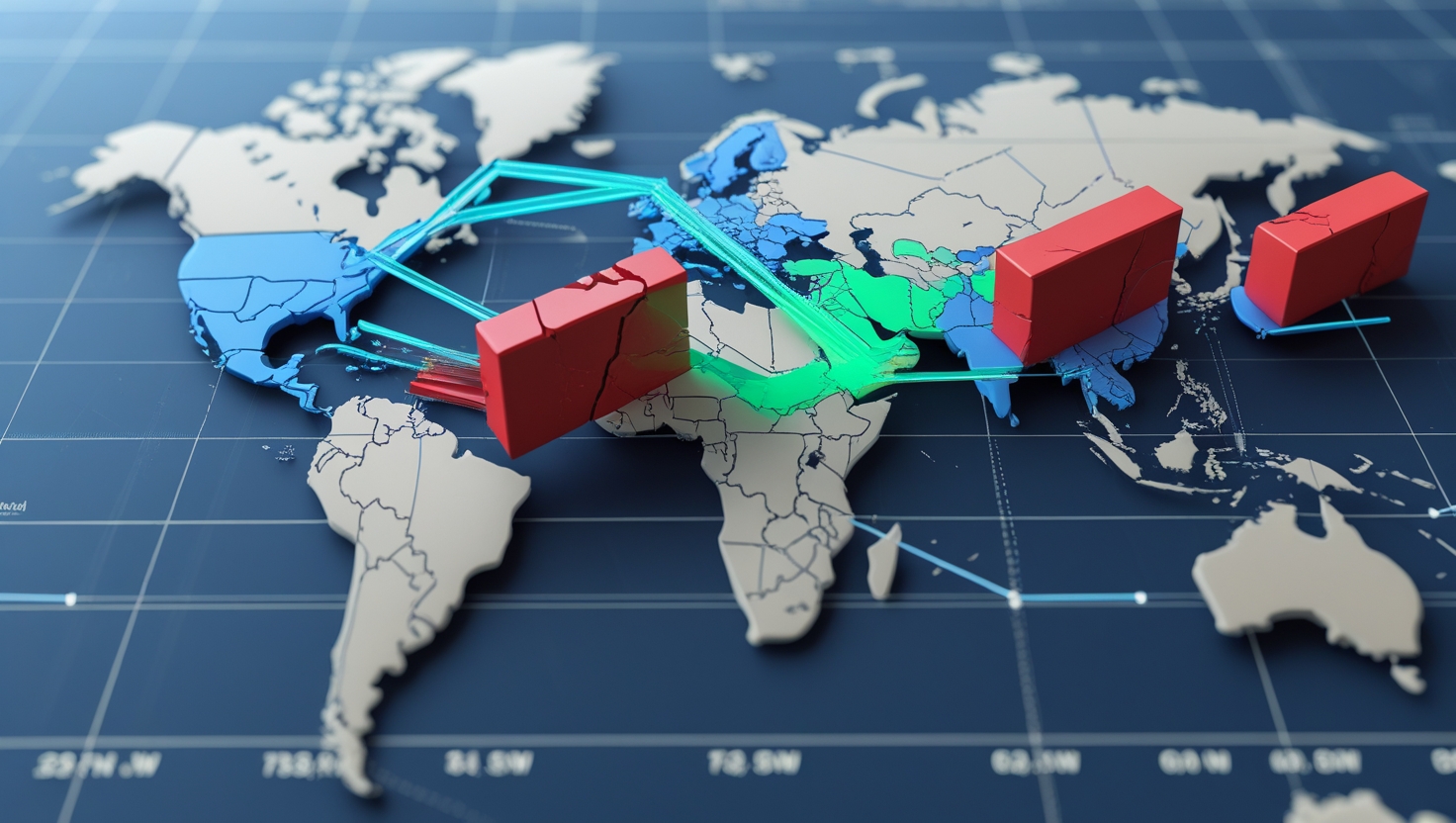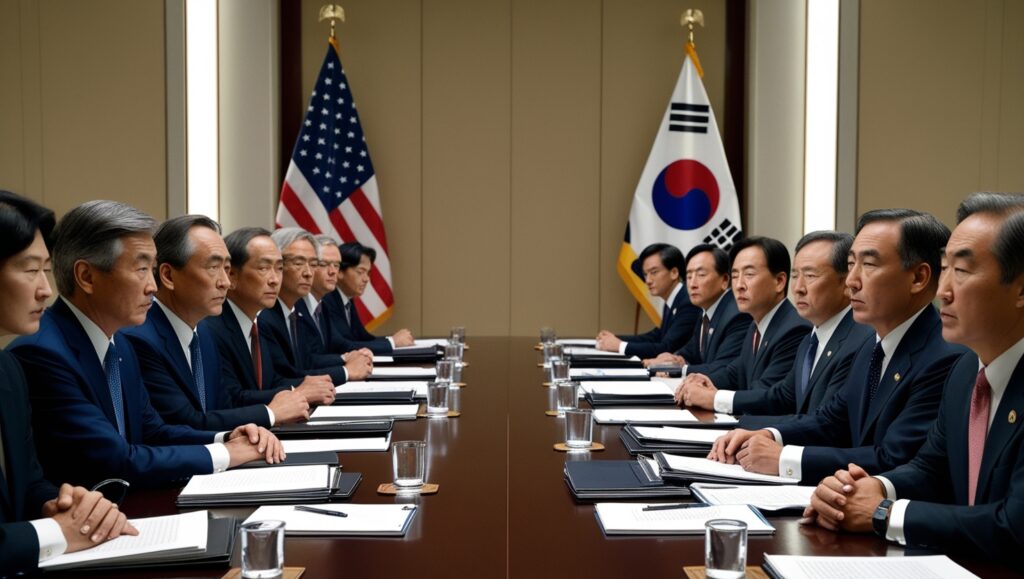Physical Address
304 North Cardinal St.
Dorchester Center, MA 02124
Physical Address
304 North Cardinal St.
Dorchester Center, MA 02124

“Tech Tariff Talks and Disputes Continue” is more than simply a headline in a world where technology is taking over; it’s a reflection of the complicated and frequently tense relationship between global powers fighting for supremacy in the digital era. The continuous discussions and disputes over tech tariffs are influencing the direction of global commerce, innovation, and diplomacy from Washington to Beijing, and now from Islamabad to London. In addition to affecting economic policies, these discussions are changing how countries cooperate—or compete—over the technology that run our daily lives.

Fundamentally, the term describes the continuing discussions and disputes between nations regarding tariffs levied on commodities and services related to technology. These tariffs may apply to software platforms, semiconductors, smartphones, AI chips, and even rare earth elements that are necessary for the production of electronic goods. The disagreements frequently start when one nation feels that another is limiting foreign access to important markets or subsidizing domestic tech companies, among other unfair trade practices.
Tensions over export restrictions, intellectual property rights, and access to cutting-edge semiconductors are among the most prominent tech trade disputes between the US and China. Other countries, like as Pakistan, are joining the battle in an effort to renegotiate tariffs that were put in place during previous trade conflicts. These debates are about power, influence, and the future of global technological leadership, not just economics.
It took time for tech tariff complaints to surface. They have their origins in the larger trade conflicts that started in the late 2010s, especially under President Donald Trump. As part of a plan to safeguard home industries and correct trade imbalances, sweeping duties were imposed on imports from a number of nations, including China and Pakistan. These actions sparked retaliatory levies and a chain reaction of diplomatic tensions, impacting everything from high-tech components to steel and aluminum.
More attention was paid to technology in the years that followed. Governments started paying closer attention to tech imports and exports as 5G, AI, and semiconductor manufacturing became essential to both economic competitiveness and national security. Citing worries about espionage and intellectual property theft, the United States placed limitations on Chinese firms such as Huawei. In response, China increased its control over exports of rare earth elements, which are essential for making military hardware, electric cars, and cellphones.
Pakistan and other nations have recently attempted to reexamine these tariffs, particularly those that are still in place from previous trade battles. Pakistani officials have met with their U.S. counterparts at high levels to talk about lowering tariffs and facilitating better access to U.S. technology products. These discussions are part of a larger trend of countries attempting to rebalance their economic ties in the face of a fast changing technology environment.

It is impossible to exaggerate the significance of these continuing conversations. Technology is the foundation of contemporary economies and is no longer merely a sector. Tariffs on electronic products have the potential to impede innovation, raise consumer prices, and upset supply systems. Businesses, investors, and consumers all experience uncertainty when tech tariff discussions and disputes persist.
For instance, concerns regarding the legality of incorporating American technology into foreign goods have been raised by the recent controversy surrounding Huawei’s AI chips. China reacted forcefully when the U.S. Commerce Department released guidance implying that these chips might be in violation of export regulations. These kind of disagreements have practical repercussions that impact everything from the development of driverless vehicles to the accessibility of smartphones.
A further layer of complication has been introduced by the strategic significance of rare earth elements. China presently controls the majority of these commodities’ mining and processing, which gives it negotiating power. Global automakers and IT firms rushed to find alternate suppliers when China started requiring export licenses for specific rare earths. This demonstrates the extent to which technology and geopolitics are now linked.
Talking about tech tariffs has definite benefits. They provide a forum for settling conflicts amicably rather than by escalation, to start. Negotiations between nations can guarantee access to vital technologies, safeguard intellectual property, and encourage fair competition. New trade agreements that promote economic expansion and innovation may also result from these discussions.
The procedure is rarely easy, though. Political tensions, competing interests, or a lack of openness can all cause negotiations to stall. Retaliatory actions in response to tariff disputes can also result in a vicious circle of economic friction that is detrimental to both parties. The stakes are considerably higher for smaller economies because they sometimes don’t have the power to influence powerful nations like China or the United States.
The rate of technological progress is another difficulty. Existing trade agreements may need to be updated frequently when new developments appear. Because of this, establishing long-term stability in tech trade partnerships is challenging. Nevertheless, the possible advantages—like better market access, lower expenses, and improved cooperation make these discussions worthwhile.

Examine the situation of semiconductor shortages during the COVID-19 epidemic to comprehend the effects of tech tariff issues. Supply chain difficulties were made worse by tariffs and export restrictions, which caused delays in everything from autos to laptops. Governments started investing in domestic chip manufacture to lessen reliance on foreign suppliers, and businesses were forced to reconsider their sourcing methods.
The emergence of fintech companies like Robinhood, which have profited from lowered trade restrictions and easier access to international markets, serves as another illustration. These platforms serve as examples of how advantageous trade arrangements may empower consumers and encourage innovation. Restrictive tariffs, on the other hand, have the potential to hinder technological innovation and prosperity.
An example of how smaller economies might deal with these issues is provided by the current discussions between the United States and Pakistan. Pakistan wants to improve its standing in the global digital economy by attempting to lower non-tariff trade obstacles and increase commerce in IT products. These initiatives highlight how crucial mutual gain and constructive participation are to conflict resolution.
Tech tariffs: what are they?
Taxes levied on imported or exported technology-related commodities, like software platforms, semiconductors, and smartphones, are known as tech tariffs.
Why do disagreements over tech tariffs arise?
Concerns about unfair economic practices, infringements on intellectual property, or threats to national security posed by particular technology are frequently the root cause of disputes.
Which nations are negotiating tech tariffs at the moment?
The main participants in the ongoing talks to address long-standing trade disputes are the United States, China, and Pakistan.
What effects do tech tariffs have on consumers?
Because tariffs disrupt supply chains, they can result in poorer availability, higher prices, and slower innovation for tech products.
Can tech tariff disputes be resolved?
Yes, through diplomatic negotiations, trade agreements, and mutual concessions, countries can find common ground and promote fair trade.
The complex dance between innovation, economics, and diplomacy is made clear by the ongoing discussions and controversies surrounding tech tariffs. These discussions are about more than just taxes; they are about who will govern technology in the future, how countries will cooperate, and the type of digital society we wish to create. The stakes are high and the consequences are wide-ranging, whether it’s the U.S. and China squabbling over AI chips or Pakistan requesting relief from legacy tariffs.
It is essential for consumers, investors, and businesses to stay up to date on these developments. The technology of the future will be determined by the decisions taken in government offices and boardrooms today. Thus, despite the headlines and the ongoing negotiations, one thing is certain: the discussions and disagreements surrounding tech tariffs will continue to influence the world for years to come.
If you found this article insightful, share it with others and join the conversation. What do you think is the future of tech trade? Let’s explore it together.